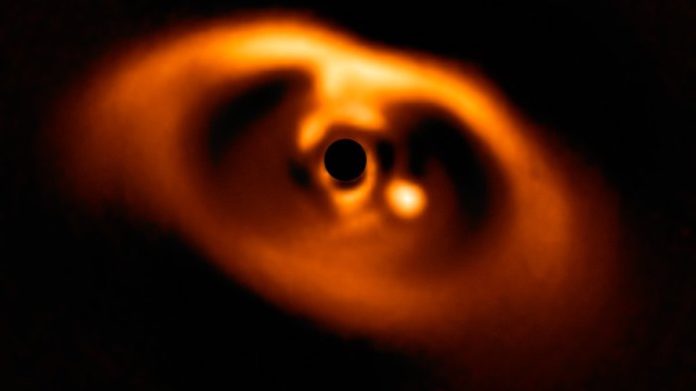For the first time in history, scientists have captured a picture of a planet being born.
The international team of researchers made the robust detection of the young planet, named PDS 70b, cleaving a path through the planet-forming material surrounding a young star.
The team of astronomers which was led by a group at the Max Planck Institute for Astronomy in Heidelberg, Germany, captured the spectacular snapshot of planetary formation around the young dwarf star PDS 70 by using the SPHERE instrument on ESO’s Very Large Telescope (VLT) – one of the most powerful planet-hunting instruments in existence.
The SPHERE instrument also enabled the team to measure the brightness of the planet at different wavelengths, which allowed properties of its atmosphere to be deduced.
The planet stands out very clearly in the new observations, visible as a bright point to the right of the blackened centre of the image. It is located roughly three billion kilometers from the central star, roughly equivalent to the distance between Uranus and the Sun. The analysis shows that PDS 70b is a giant gas planet with a mass a few times that of Jupiter. The planet’s surface has a temperature of around 1000°C, making it much hotter than any planet in our own Solar System.
The dark region at the centre of the image is due to a coronagraph, a mask which blocks the blinding light of the central star and allows astronomers to detect its much fainter disc and planetary companion. Without this mask, the faint light from the planet would be utterly overwhelmed by the intense brightness of PDS 70.
“These discs around young stars are the birthplaces of…










